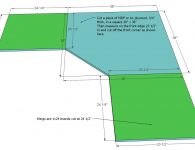

The discovery of seven habitable planets just 40 light years away is certainly impressive, but the fact is, they are still 40 light years away. Unless we’re willing and able to spend thousands of years traveling through space, we won’t be rolling into the TRAPPIST-1 system anytime soon. This means that over the coming decades, advanced scientific instruments closer to home will play very important roles in exploring these distant worlds – perhaps none more so than the James Webb Space Telescope. So what can we expect when it is fired into orbit next year? We checked in with some of the scientists behind yesterday’s hugely exciting discovery to learn how astronomers will use NASA’s next-generation space telescope to probe the secrets of the TRAPPIST-1 system…
Continue Reading What will the James Webb Space Telescope reveal about the newly discovered exoplanets?
Category: Space
Tags:
Related Articles:
- Earth-like planets may not be very Earth-like
- Three newly discovered exoplanets prime candidates in search for life elsewhere in the Universe
- Spitzer Space Telescope confirms nearest rocky planet
- Tidally locked exoplanets more habitable than previously thought
- Plate tectonics complicates the Goldilocks equation
- Astronomers discover youngest exoplanet to date
http://newatlas.com/james-webb-telescope-trappist-exoplanets/48075/ via http://newatlas.com/ #CIO, #Technology








